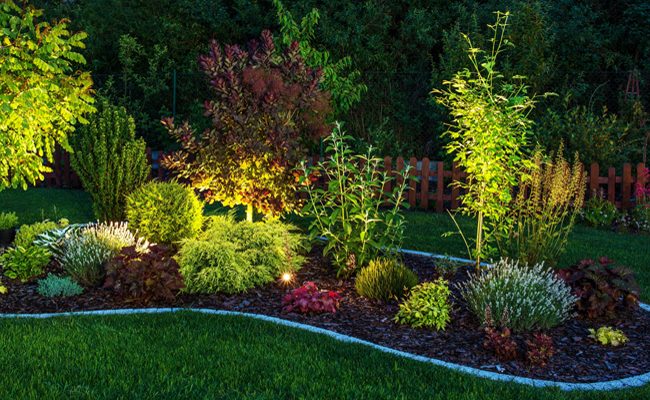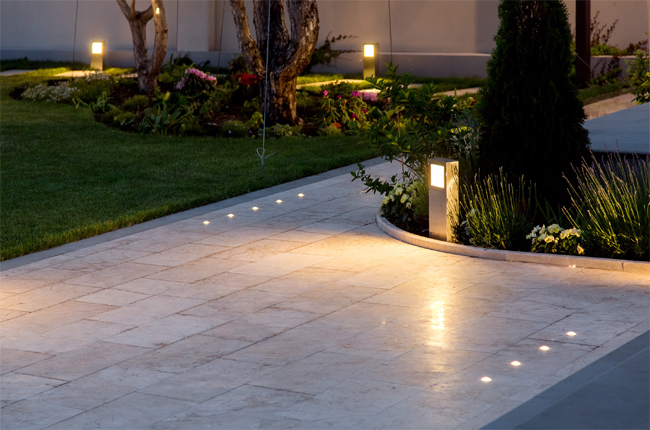
Outdoor lighting is an integral part of the design of your home. As you are likely aware, it is essential to have good outdoor lighting to illuminate walkways and driveways at night so that you can safely navigate around your property.
It’s also vital for the security and maximization of natural light in your yard. Different types of lighting are available in today’s market, from waterproof lanterns to more traditional lights with built-in reflectors that offer greater brightness.
But how do you ensure you get it right with your outdoor lighting? Here are some common outdoor lighting mistakes and how you can solve them.
1. Not Involving Professionals
When it comes to outdoor lighting, there are many things you can do yourself to save money. However, if you want your outdoor lighting to last for years, you should consider hiring a professional to install the lights.
A professional will not only help you install the lighting but also give you the necessary advice to help you maintain your lighting to save yourself some money.
On the other hand, some states require legal approval before installing such lights, hence requiring the assistance of a professional.
Solution
You can involve an electrician or a light installation company, such as Washington Outdoor Lighting when planning for your outdoor installation to ensure that you get your budget right and be on the safe side of any law requirements that you may not be aware of.
2. Using Anything Other Than LED Lighting
Many people use regular incandescent bulbs in their outdoor lighting. Incandescent bulbs are cheap and easy to find but release less light than LED lights.
Incandescent bulbs and fluorescents consume a lot of energy and overheat when used. This could cause an explosion of the bulbs or even interfere with nearby plants. These bulbs also have a low life span, meaning you’ll be required to visit the shop frequently for a replacement.
Solution
The most amicable way to ensure that your outdoor lights are going to work properly is to use LEDs as your primary sources of illumination.
These lights have been proven to be the most energy-efficient bulbs on the market. You’ll also want to use LED fixtures in combination to ensure that there will always be enough light output from your system throughout the night without turning anything on or off during peak hours of use.
This is because they don’t consume much energy during their operation, unlike the incandescence and fluorescents.
3. Using The Wrong Lighting Fixture
You may even have a large outdoor area that’s not visible inside your home and need to add some lighting for safety reasons. There are so many lighting fixtures to choose from that can suit your needs.
The most common mistake is using a floodlight instead of an uplight. Floodlights are mainly designed to illuminate a large area, while uplights tend to be smaller in coverage yet more focused on highlighting one object or object group.
Solution
When picking out an outdoor fixture, it’s essential to consider how much light it will give off. It is recommended to look at the size of the bulb and then consider how long it should last.
If you want your outdoor area lit up at night but don’t want to use an expensive floodlight, choose a low-wattage bulb with a longer lifespan than those used in indoor fixtures or security lights like motion detectors.
4. Unmatched Color Temperature
The color temperature of your outdoor lighting will affect your ability to see at night, especially if you try to do other tasks in the dark. A cool-white light has an orange tinge, making it harder to see small details and objects.
If you have any yellow lights (like those found in street lamps), they may cause some discomfort or irritation of the eyes after prolonged exposure.
Solution
You can use color temperature to create different moods or atmospheres throughout your garden. For example, if you’d like a romantic garden, choose a warm, white lamp that will glow warmly on your plants and flowers while still allowing you to see clearly at night.
For an outdoor space where children play, and visitors gather, opt for more daylight lighting, creating a safer environment for them.
5. Ignoring Glare And Light Pollution
Glare is a significant concern for outdoor lighting. It can cause eye strain and can limit visibility when it’s dark.
Light pollution can cause problems with animals like birds getting confused by this unnatural glow and flying into windows. On the other hand, it can be caused by improper outdoor lighting and light trespass from nearby buildings and homes.
If you have glary outdoor lighting, consider replacing your existing fixtures with energy-efficient models.
Solution
Use lower wattage bulbs. The higher the level of watts, the more light your bulb emits. If you want to reduce glare and keep your eyes safe, try using lower wattage bulbs that emit less light.
You can consider using motion-activated lights. These lights turn on automatically when someone approaches so that their eyes don’t have to adjust from darkness to brightness with each step.
6. Too Much Lighting In One Spot
Lighting is a great way to set the mood and create an ambiance, but too much of it can be just as bad as not enough. Too much lighting in one spot can cause the area to become overexposed.
This can make your whole yard look like a stage and give off an artificial feel.
Solution
To avoid this issue, use multiple lights that disperse their light evenly throughout your home or business so that each section looks warm and inviting.
This will provide more light than one source would but still allow you to control how much light is where.
Avoid putting lights in one area, such as the front of your house. If you decide to use spotlights, try using them sparingly and strategically, so they don’t overpower the rest of your yard.
7. Too Little Contrast Or Too Much Contrast
Contrast is the relationship between the light intensity of an object and its background. Too little contrast will make your outdoor lighting look washed out, which can be very unappealing to your customers. When looking at something, or even in your backyard, you want to see crisp edges and definition, which is compromised by low contrast.
Suppose there’s too much contrast in an area. In that case, it becomes hard to see things clearly at night, possibly causing people to run into things.
Solution
To achieve good outdoor lighting, you need to choose a color temperature that is warm enough to be seen from a distance but cool enough so that it doesn’t look yellow or blue.
You can also add enough light to make it easy for people to see where they’re going at night.
This doesn’t mean you should put up 100-watt floodlights in every corner of your yard, aim for maybe 25 watts per square foot of space, which means a standard residential street lamp would do nicely.
8. Not Having Enough Lighting
Not having enough lighting can be a problem for outdoor spaces. Not only do you want to ensure that you have enough brightness and that it’s not too cold or too hot, but it also has sufficient coverage so that everything is illuminated.
Having enough lighting does not mean you put lighting everywhere, therefore, making it too concentrated in one area.
This means putting enough light to serve its purpose of providing enough security in your home and comfort to the eyes.
Solution

You can add more lights by installing an outdoor light fixture in the middle of the path or even the steps leading up to your front door. If you want to take it one step further and make it look like you have an actual porch swing, consider adding a small outdoor light fixture above it.
Another solution for creating more outdoor lighting is using motion-activated outdoor lights. Motion-activated lights are designed to turn on automatically when it gets dark and go off again during the day.
9. Starting Without A Plan
Many people think lighting is just about putting up lights and calling it good. But it’s not that simple. Plan, create a budget, and even design to ensure your outdoor space looks great at night.
This means you should know what you want to achieve with your lighting, whether adding atmosphere or increasing security, and then source the right products and accessories to help you achieve those goals.
Solution
If you’re starting from scratch, it’s essential to consider the materials needed for your project and the time you have available to complete the job. If you don’t have enough time, consider hiring someone else who does. A qualified contractor will advise you on how much work is needed and how long it will take while ensuring they meet your requirements.
Conclusion
Hopefully, you’ve got the gist of outdoor lighting and some of the most common mistakes homeowners make. With the right outdoor lights and the right outdoor lighting plan, you can easily avoid those common errors. Consider your options for your next outdoor fixture, or perhaps demystify those outdoor lights that have been driving you crazy for years.
Leave a Reply